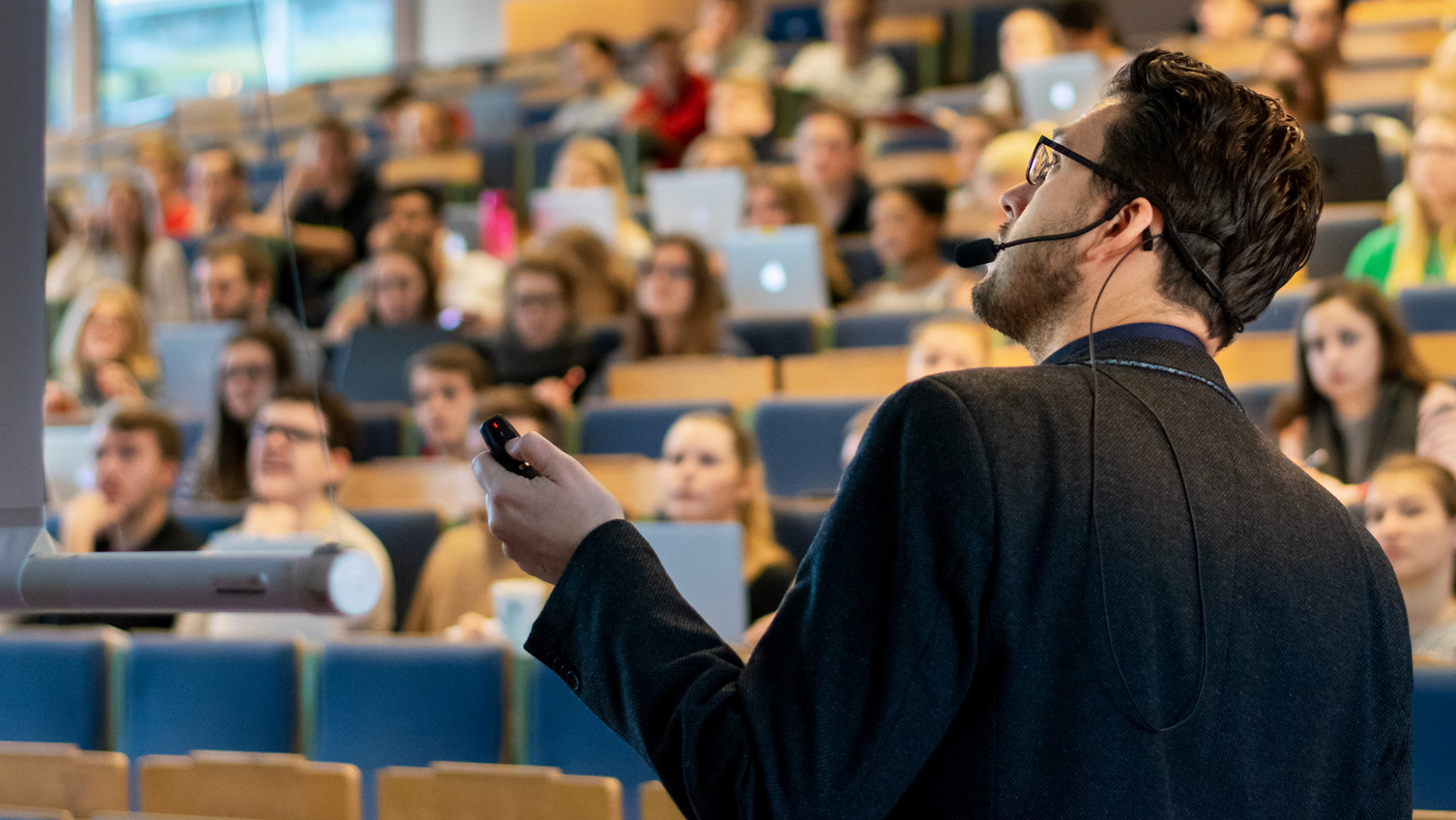Aol2
Assurance of Learning (AOL) is a quality management tool which evaluates study programs as a whole. It allows to monitor whether students acquire those competencies and skills which the program is designed to offer. It doesn’t evaluate you but it improves the program based on what and how all students are learning.
If you'd like to get more information, there are two separete sections below: one for students and one for academic stuff.
Student Perspective
 ©Leuphana/Markus Tiemann
©Leuphana/Markus Tiemann
What does AOL mean for you and why does it matter?
The AOL process helps us to adapt courses, improve content and ensure that your degree stays relevant in the real world. AOL builds on information we gather in the programs. From time to time, part of your coursework, like thesis or project, might be used anonymously to assess if students are meeting key learning goals. You don’t need to do anything extra, but your work helps us make your program even better.
What does AOL measure?
Assurance of Learning (AOL) measures whether students achieve the program-specific Competency Goals of their academic program. While the specific learning goals vary by program, they are all grounded in four overarching dimensions:
Disciplinary knowledge: Understanding and applying core concepts of your field.
Academic & research skills: Engaging in scientific reasoning, critical thinking and responsible research.
Entrepreneurial and solution-oriented mindset: Developing innovative and practical approaches to challenges.
Responsible management: Students act responsibly in their decision-making.
If you’d like to explore the specific goals for your program, you can find them below in the expendable sections.
How can you get involved?
Yes! You can join the Quality Circle of your program, you can write us an email via aol@leuphana.de.
The best position for you to voice needs, wishes and concerns is the If you are curious about Student Feedback in the Quality Circle, here are some information: you together with all students of your major resp. master’s program will be invited via mystudy to meet with Professors and Coordinators of your program to give feedback, share ideas and improve the study environment. You don’t need to be an expert, you can just bring the perspective of your cohort to the table. AOL helps make programs better, fairer and more relevant. Join us to shape the future of your studies and make your voice heard!
Here are the competency goals for your study program:
Faculty Perspective
 ©Leuphana/Kersten Benecke
©Leuphana/Kersten Benecke
What is your role in AOL?
As a faculty member and lecturer, your role in Assurance of Learning is to support the evaluation of whether students are achieving key program-level learning competencies.
All bachelor’s and master’s thesis you supervise need to be evaluated along the program competency goals. For this, you automatically receive an email inviting you to a survey. If your course or a thesis you supervise is selected for AOL evaluation, you will be asked to assess your students using a separate AOL evaluation survey, based on their final assignments, exams or thesis. This assessment is independent of regular grading and is used only for program level quality assurance.
Team colleagues of the team of the Dean’s office AACSB supports you throughout this process and isare available for any questions via aol@leuphana.de.
What does the AOL cycle look like?
The AOL cycle follows a structured control loop. First, measurable learning objectives are defined for each competency goal. Student performance is then assessed using these criteria through selected modules and theses. The collected data is analyzed to identify areas for improvement. These insights are integrated into ongoing curriculum development and teaching strategy discussions and the outcomes are monitored through repeated measurements in future cycles. The Quality Circles of each program are one central place for this.
What kind of data is collected and how?
There are a couple of main sources for data collection:
Selected modules, where lecturers evaluate student performance based on specific learning competencies. Final theses (bachelor’s, master’s) where supervisors assess the learning outcomes using AOL evaluation surveys. Quality management tools such as Quality Circles and internal assessments.
What happens after the data is collected?
After data is collected, it is analyzed by Team AACSB and discussed with program managers and faculty. It enriches the discussion in the Quality Circle. The findings are used to improve the quality of study programs through changes to curriculum design, evaluation processes or teaching coordination. This ensures that programs remain aligned with their intended learning goals and continue to evolve based on student learning outcomes.
Downloads
It help you understand AOL better but do you still need more information? You're in the right place to check!
Contact
We welcome your thoughts. For questions, suggestions, concerns related to teaching and program coordinator, please reach out to the responsible contact person:
AOL Process:
- Dr. Lotte Lutz
Bachelor Programs Business and Management:
- Anja Roß
Bachelor Programs Engineering and Information Systems:
- Hanka Majewski
Master Programs Management:
- Julia Oehmichen
